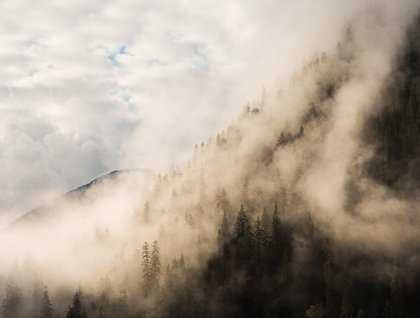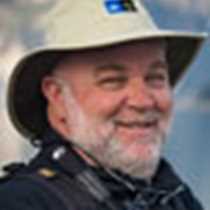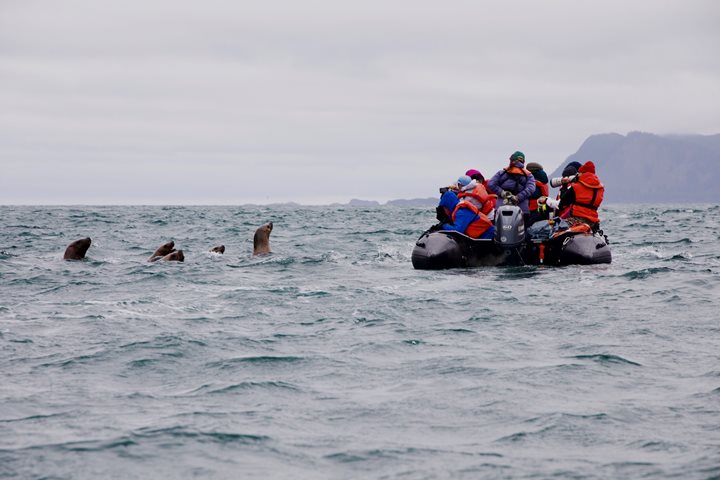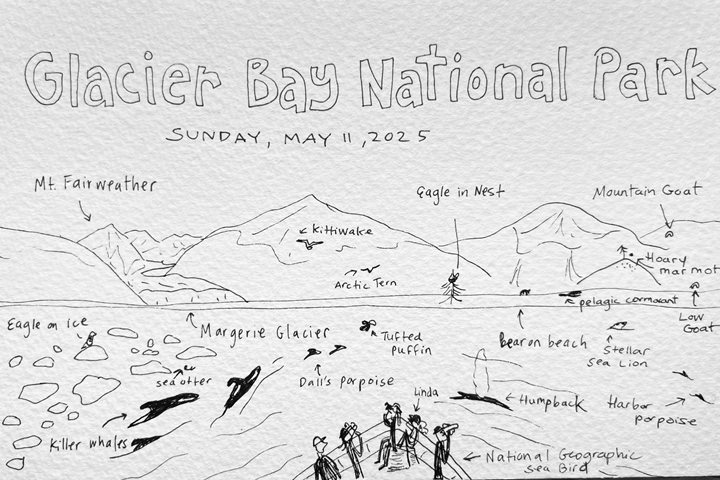A black bear yawns and stretches the sore muscles that operate his claws by pressing his massive paws into the soft, spongy moss of his night-bed. Before the sleep clears from dark eyes, the bear’s nose is already scanning, probing the damp air of the forest for clues of what might be within a mile of this spot. As dawn begins to glow in the clouds, the smells are familiar—leaves decaying on the ground, musty spores from fungus, sweet yellow cedar bark, the dusty feathers of a bald eagle on a high perch, and 500 yards away, rotting salmon. The salmon carcasses are the bear’s contribution to the health of the forest; what he doesn’t eat is left behind to fertilize the plants. Turning to face the mountain, he can hear the high notes of fresh melt water as it rushes down, polishing the granite smooth and glossy, exploding over boulders and dancing around cracks in the earth.
Down at the creek, mist begins to rise from the water to meet more robust clouds that move through the valleys and across the fjord. Huge spruce trees become ghosts that haunt the hills and peek out above ridges. Small flocks of chestnut-backed chickadees begin their morning forage, moving between the lower trees and shrubs, eating insects off of damp leaves and searching for pine cones with delicious seeds inside. The seeds that don’t get consumed fall to the ground, left to germinate and begin life as another tree.
The chickadees are joined this morning by a belted kingfisher, broadcasting her territory with a loud rattling chitterchitter as she patrols the shallows along the banks. A distant wolf howls at the clouds, startling a mink who dashes for cover back under some old trees. Unlike black bears, the small mammals of the forest survive by being timid and run at the slightest provocation. A bright carpet of yellow and orange leaves on the forest floor are like tiny billboards, signs that autumn has arrived in Southeast Alaska.
High above, an adult bald eagle observes this scene with an intense yet somewhat aloof gaze. His bright white head flashes like a beacon to other birds, advising them to keep their distance from his favorite hemlock limb. To the casual observer, the eagle appears armed for battle with sharp claws and a ferocious beak. But it’s his eyes that are his true weapons. From up here, the eagle can see everything that the bear can smell. The chickadees, the kingfisher, the mink, and the bear are all under the eagle’s constant surveillance. He can easily pick out a single salmon in the water from 100 yards away, or follow the wolf crossing a distant beach.
In the middle of a small bay, a harbor seal surfaces for a breath, his exhale creating a small puff of spray that sparkles in the sunlight. It has been a lazy morning of easy fishing down deep, where the colder salt water remains relatively clear. Below him, a forest of another kind teams with life: fish, anemones, sea stars, sponges, and sea cucumbers all occupy the underwater niche of this fjord that they share with the air breathers above.
Glaciers carved these Alaskan fjords, oceans flooded them and forests grew up above the waters, creating a habitat for this morning’s creatures to thrive on this fine September morning when the Misty Fjords lived up to their name.







